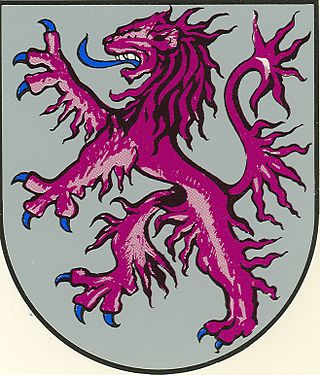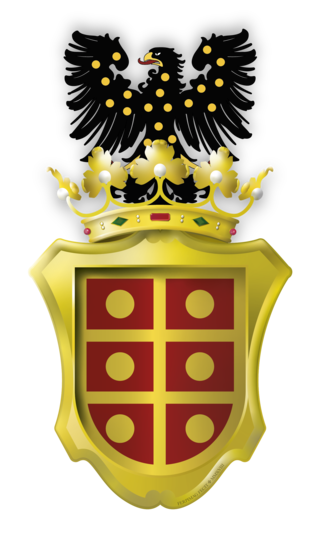
Praia da Vitória is a municipality in the Portuguese archipelago of the Azores. With a population of 21,035, the second largest administrative authority on the island of Terceira, it covers an area of 162.29 square kilometres (62.66 sq mi), that extends from the northern coast halfway into the interior.

Santa Cruz das Flores is a municipality situated in the north half of the island of Flores, in the Portuguese archipelago of the Azores. Situated in the sparsely populated Western Group, the population in 2021 was 2,020 inhabitants in an area that covers approximately 70.91 square kilometres (27.38 sq mi), bordering the southern municipality of Lajes das Flores.

Lajes das Flores is a municipality in the western part of the Azores; it includes the southern part of the island of Flores. To the north, where it is bordered by Santa Cruz das Flores. The population in 2021 was 1,408, in an area of 70.05 square kilometres (27.05 sq mi). Its municipal seat is in the parish of the same name.

Horta is a municipality and city in the Portuguese archipelago of the Azores encompassing the island of Faial. The population in 2011 was 15,038 in an area of 173.06 square kilometres (66.82 sq mi) The city of Horta itself has a population of about 7,000.

Angústias is one of the three freguesia that comprise the urban area of the city of Horta, on the island of Faial in the Portuguese archipelago of the Azores. This is an economically active, densely populated area. The population in 2011 was 2,418, in an area of 3.79 km2. Due to its commercial nature, the parish is one of the island's primary destinations for tourism, due to the concentration of historical sights and shopping. It contains the localities Caminho do Meio, Courelas, Pasteleiro, Port Pim, Termo da Igreja and Vigia.

Francisco Barreto was a Portuguese soldier and explorer. An officer in Morocco during his early life, Barreto sailed to Portuguese India and was eventually appointed viceroy of the colony. After his return to Lisbon, he was tasked with an expedition to southeast Africa in search of legendary gold mines. Barreto died in what is now Mozambique, having never reached the mines.

Francisco de Mascarenhas was the 1st count of Vila da Horta, the 1st count of Santa Cruz and the 13th viceroy of Portuguese controlled India from 1581 until 1584, captain of donatary of the islands of Flores and Corvo.
Count of Santa Cruz was a Portuguese title of nobility created by a royal decree of King Philip II of Portugal, also known as Philip III of Spain, dated from October 3, 1593, and granted to Francisco de Mascarenhas (1530-1608), nephew of Dom Pedro de Mascarenhas, 6th Viceroy of Portuguese India.

Marquess of Gouveia was a Portuguese title of nobility created by King Philip III of Portugal, also known as Philip IV of Spain, by a royal decree dated from January 20, 1625, granted to Manrique da Silva, who already was 6th Count of Portalegre, second male child of the 4th Counts of Portalegre.

Count of Portalegre is a Portuguese title of nobility created by Letters Patent dated 6 February 1498 by King Manuel I of Portugal granted to D. Diogo da Silva.

D. António de Almeida Soares de Portugal, 1st Count and 1st Marquess of Lavradio, 4th Count of Avintes, Governor General of Angola and Viceroy of Brazil. Born in Lisbon, Portugal on 1 May 1701; died in São Salvador da Bahia, Brazil on 4 July 1760. The first Marquess of Lavradio was a prominent Portuguese statesman and the head of an established noble family.

Marquess of Lavradio is a Portuguese title of nobility created by Letters Patent of King José I of Portugal on 18 October 1753 for D. António de Almeida Soares de Portugal, 1st Count of Lavradio and 4th Count of Avintes.
Miguel António de Sousa Horta Almeida e Vasconcelos, 2nd Baron of Santa Comba Dão was a Portuguese nobleman.
António Maria de Sousa Horta e Costa was a Portuguese jurist, magistrate, and politician.
Pedro Correia da Cunha was a Portuguese nobleman who was the Second Donatary-Captain of Porto Santo, and the 1st Donatary-Captain of the island of Graciosa, in the Portuguese archipelago of the Azores.

António José de Ávila was a military officer, politician, member of the Portuguese nobility and benemerit.
The Captaincies of the Azores were the socio-political and administrative territorial divisions used to settle and govern the overseas lands of the Azores by the Kingdom of Portugal. These territories, a segment of the Captaincies of the Portuguese Empire, which usually conformed to the individual islands, allowing the stewardship of the King through the Donatary and Captaincy system.

The Captaincy General of the Azores was a politico-administrative structure of governance imposed in the Azores on 2 August 1766, with its seat in Angra. It remained the de facto system of governance for 65 years, until it was abolished on 4 June 1832 by D. Peter IV, but by 1828 its de jure status had made it nonoperational, owing to the revolutionary movements that lead to the Liberal Wars. The creation of the Captaincy-General was part of the Pombaline reforms to the Portuguese administration, during the reign of Joseph I, under the initiatives of Sebastião José de Carvalho e Melo, 1st Marquis of Pombal, then prime minister. A Captaincy-General operated from the Palace of the Captains-General, under the direction of the titular Captain-General, who operated as the Governor of the Azores, with additional jurisdiction on every island of the Azorean archipelago. The Captaincy-General was succeeded by the Province of the Azores, an ephemeral administrative structure that was collapse in the immediate years.
The Church of Nossa Senhora do Pilar is a 17th-century church located in the civil parish of Cedros in the municipality of Santa Cruz das Flores, in the Portuguese island of Flores, in the archipelago of the Azores.











